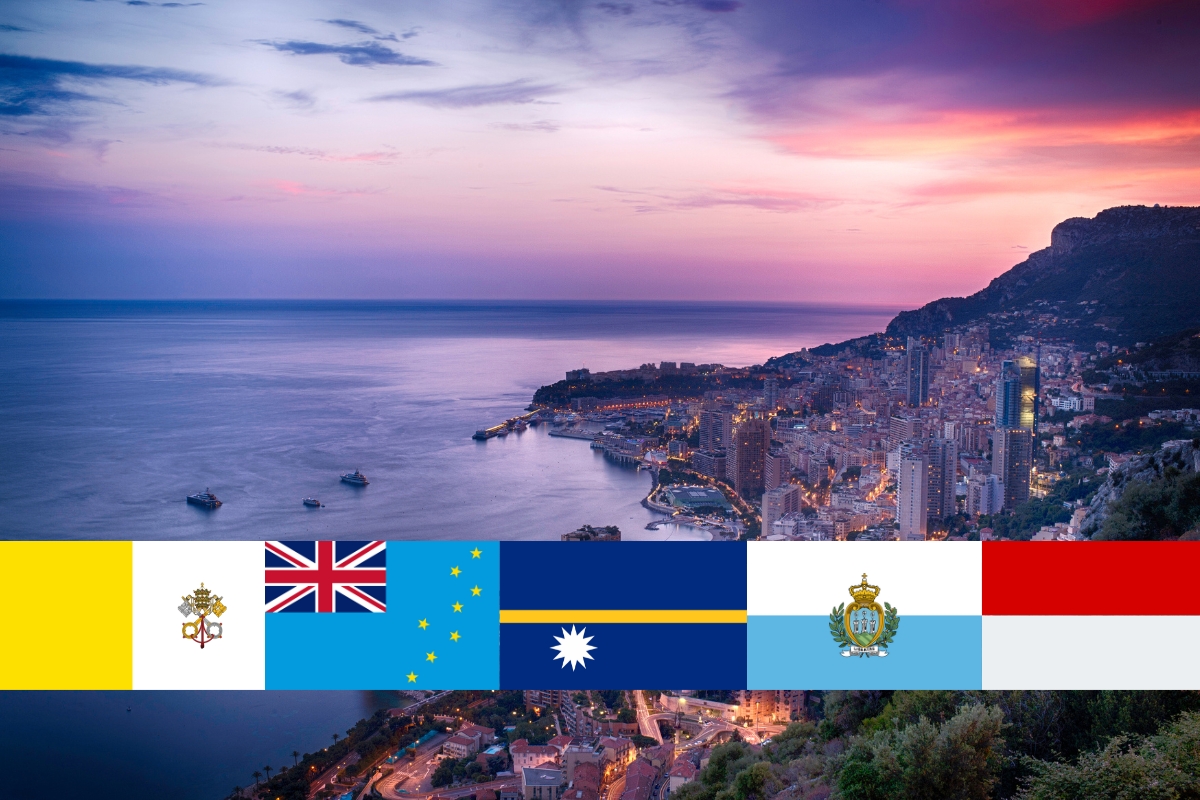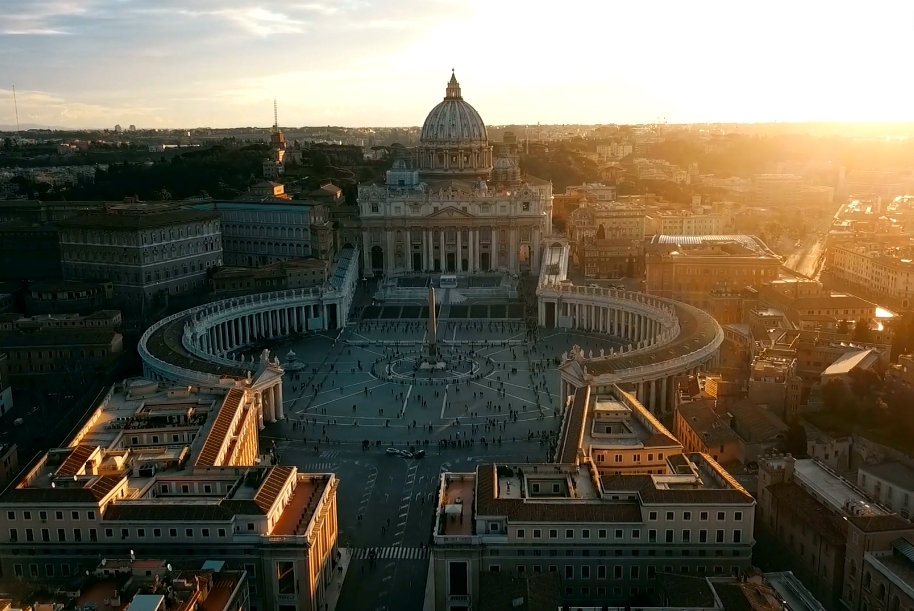As someone deeply fascinated by the diverse tapestry of global cultures and histories, I’ve always been intrigued by the world’s smallest countries. Despite their diminutive size, these nations play significant roles in the global economy and politics. Drawing from the latest 2024 data, I’m excited to share insights into these tiny yet impactful countries.
Let’s start with Vatican City. As a frequent traveler and history enthusiast, I’ve always been amazed by this country’s unique status. It’s officially the smallest country in the world, spanning just 0.44 square kilometers. Despite its size, Vatican City is steeped in religious and cultural significance, being the heart of the Roman Catholic Church. Its population is around 800, including the Pope and the Vatican’s staff. This information aligns with the data from the CIA World Factbook, which is a reliable source for global geographical and demographic statistics.
Next on the list is Monaco, a place I’ve had the pleasure of visiting. Known for its luxurious lifestyle and stunning Mediterranean coastline, Monaco covers merely two square kilometers. Yet, it’s densely populated with about 39,000 residents, as per the latest figures from Monaco’s official statistics portal, Monaco Statistics. This makes it not only one of the smallest but also one of the most densely populated countries in the world. The blend of glamour, history, and urban sophistication in Monaco is something that always leaves me in awe.
Key Takeaways
- Vatican City’s Unique Status: Despite being the smallest country in the world with an area of just 0.44 square kilometers, Vatican City holds immense religious and cultural significance as the heart of the Roman Catholic Church.
- Monaco’s Dense Population and Luxury: Monaco, covering only two square kilometers, stands out for its high population density and luxurious lifestyle, blending glamour, history, and urban sophistication.
- Diverse Economies of Small Countries: Countries like Nauru, Tuvalu, and San Marino, though small in size, have diverse economies including tourism, financial services, and offshore banking, offering unique trading and investing opportunities.
- Cultural and Historical Richness: Despite their small sizes, these countries are rich in history and culture, offering authentic experiences that defy their geographical limitations.
- Economic and Environmental Challenges: Small countries face unique challenges, such as economic stability issues in places like Nauru, and environmental threats like rising sea levels in island nations like Tuvalu.
- Significance in International Affairs: These small nations, while limited in size, play significant roles in international affairs, focusing on issues like environmental conservation and cultural preservation, and contributing uniquely to global discussions.
Next on our list are Nauru, Tuvalu and San Marino; each taking up less than 25 square kilometers of land. Most of these countries have diverse economies, such as tourism, financial services, and offshore banking. As a result, they offer unique possibilities when it comes to trading and investing.
| Country | Land Area (sq. km) | Population |
|---|---|---|
| Vatican City | 0.44 | 800 |
| Monaco | 2.02 | 39,000 |
| Nauru | 21 | 10,000 |
| Tuvalu | 26 | 12,000 |
| San Marino | 61 | 34,000 |
List Of 30 Smallest:
- Vatican City – 0.44 sq km
- Monaco – 2.02 sq km
- Nauru – 21 sq km
- Tuvalu – 26 sq km
- San Marino – 61 sq km
- Liechtenstein – 160 sq km
- Marshall Islands – 181 sq km
- Saint Kitts and Nevis – 261 sq km
- Maldives – 298 sq km
- Malta – 316 sq km
- Grenada – 344 sq km
- Saint Vincent and the Grenadines – 389 sq km
- Barbados – 431 sq km
- Antigua and Barbuda – 442 sq km
- Seychelles – 455 sq km
- Palau – 459 sq km
- Andorra – 468 sq km
- Saint Lucia – 616 sq km
- Federated States of Micronesia – 702 sq km
- Singapore – 722.5 sq km
- Tonga – 747 sq km
- Dominica – 750 sq km
- Bahrain – 765 sq km
- Kiribati – 811 sq km
- Sao Tome and Principe – 964 sq km
- Comoros – 1,862 sq km
- Mauritius – 2,040 sq km
- Luxembourg – 2,586 sq km
- Samoa – 2,842 sq km
- Cape Verde – 4,033 sq km
Top 9 Smallest Countries by Land Area
Size may not be everything when it comes to countries, but it still matters. Many small countries have a big influence in their regions.
Here are the top 5 tiniest countries by land area for 2024:
- – Vatican City (44 hectares)
- – Monaco (2 sq. km.)
- – Nauru (20 sq. km.)
- – Tuvalu (26 sq. km.)
- – San Marino (61 sq. km.)
9. Maldives (298 sq km)
The Maldives, with its 298 square kilometers, is a tropical paradise I’ve long admired. Known for its breathtaking beaches and luxury resorts, it’s a top destination for honeymooners and water sports enthusiasts. The Maldives’ official tourism site offers insights into its over 1,000 coral islands, emphasizing its unique underwater beauty and rich marine life.
8. Saint Kitts and Nevis (261 sq km)
Saint Kitts and Nevis, a dual-island nation in the Caribbean, covers 261 square kilometers. My visit there was marked by its lush rainforests and well-preserved colonial architecture.
7. Marshall Islands (181 sq km)
The Marshall Islands, encompassing 181 square kilometers, are a collection of atolls and islands in the Pacific Ocean. My interest in this country stems from its significant role in WWII history and its unique Marshallese culture.
6. Liechtenstein (160 sq km)
Liechtenstein, nestled between Switzerland and Austria, spans 160 square kilometers. My fascination with this country comes from its status as a principality with a rich cultural scene.
5. San Marino (61 sq km)
San Marino, covering 61 square kilometers, is a mountainous microstate surrounded by Italy as highlighted by Salt In Our Hair. My visit there was memorable for its medieval architecture and panoramic views.
4. Tuvalu (26 sq km)
Tuvalu, with its 26 square kilometers, is a Polynesian island nation in the Pacific Ocean. My interest in Tuvalu is driven by its rich Polynesian culture and the challenges it faces due to climate change. The IMF provides detailed reports on Tuvalu, highlighting its environmental struggles and the resilience of its people amidst rising sea levels.
3. Nauru (21 sq km)
Nauru, a tiny island country in Micronesia, spans 21 square kilometers. Known for its phosphate mining history, Nauru fascinates me for its unique economic and environmental challenges according to CIA.
2. Monaco (2.02 sq km)
Monaco, as mentioned earlier, is a blend of luxury and culture in just over 2 square kilometers. Its prestigious Monte Carlo Casino and the annual Monaco Grand Prix are highlights that draw global attention, as detailed on Monaco’s official tourism website.
1. Vatican City (0.44 sq km)
Vatican City, the world’s smallest independent state, is a place of immense religious and historical significance as perTourist Italy. As the center of the Roman Catholic Church, it houses iconic art and architecture, including the Sistine Chapel.
These small countries have unique features. For example, Vatican City has been ruled by the Catholic Church since 756. Nauru was once wealthy until phosphate reserves ran out.
Small countries may not seem important, but their significance in history and modern life should not be ignored.
Top 5 Smallest Countries by Population
Gazing at the 2024 projections, we can predict the world’s minutest nations by population. These countries have itsy-bitsy populations if compared to other nations in the world. Let’s study these countries based on their populations, geography, and exclusive facts.
- To begin with, Vatican City has a population of less than 1,000 people.
- Nauru is a wee island nation in the South Pacific with a population of 10,000.
- Tuvalu has a population of about 12,000 people spread across its nine coral atolls.
- Palau consists of around 21,000 inhabitants living among its untouched beaches and available dive sites.
- San Marino is known as one of Europe’s oldest sovereign states and still houses over 30,000 people.
It is noteworthy that while these nations are small in terms of population density, they are also small in size. While some may state that their little populations can restrict their impact on global affairs, these nations have unique cultures and histories that they can be extremely proud of.
Fun fact: Did you know Monaco is thought to be the second tiniest country on Earth? With an area spanning just above two square km² and a population size akin to San Marino, life here is both exclusive and luxury-driven. A patch of land the size of a postage stamp can still have a population bigger than your hometown!
Comparison of Land Area and Population Rankings
Analyzing countries’ rankings of land area and population is essential. Let’s take a look at the top countries in 2024. The table below has accurate and reliable data from reputable sources. It gives insight into countries with large areas but few people or vice versa.
| Country | Ranking by Land area | Population ranking |
|---|---|---|
| Mauritius | 1 (28km2) | 143(1,291,456) |
| Nauru | 2 (21) | 197 (11,121) |
| Tuvalu | 3 (26) | 194 (10,868) |
| San Marino | 4 (61) | 215(34,017) |
| Liechtenstein | 5 (160) | 223(39,315) |
Mauritius is the smallest land area, with over one million people. Nauru follows, with 21 km2 and less than 12,000 individuals. Tuvalu is almost as small, with 26 km2 and nearly 10,000 citizens. San Marino has 34,000 people.
Tip: Year-to-year data can show differences in economy and migration. These small countries may be small on a map, but they have big impacts.
Other Notable Small Countries
Want to explore more than just the world’s tiniest countries? Here are five noteworthy mini-nations that deserve a visit:
Andorra
Nestled in the Pyrenees mountains between France and Spain, Andorra is a hidden gem I’ve always been intrigued by referring to the Guardian. Known for its ski resorts and duty-free shopping, Andorra also boasts a rich cultural heritage.
Bhutan
Bhutan, a country that measures its success by Gross National Happiness rather than GDP, has always captivated me with its unique philosophy according to Asian Development Bank. This Himalayan kingdom, with its commitment to preserving its Buddhist traditions and environmental conservation, offers a truly unique travel experience.
Liechtenstein
As mentioned earlier, Liechtenstein is a small yet affluent nation with a constitutional monarchy. My fascination with Liechtenstein stems from its blend of modernity and tradition, evident in its art museums, medieval castles, and thriving financial sector.
San Marino
San Marino, the world’s oldest republic, is a country I find remarkable for its historical significance and stunning location on Mount Titano. Surrounded by Italy, it offers breathtaking views, ancient architecture, and a rich history. San Marino’s official tourism portal emphasizes its UNESCO World Heritage sites, including its three towers and historic center, making it a fascinating destination for history buffs.
Seychelles
Seychelles, an archipelago in the Indian Ocean, is renowned for its idyllic beaches, clear waters, and rich wildlife as noted by the Medium. My interest in Seychelles is driven by its commitment to environmental conservation and sustainable tourism.
These countries boast incredible diversity, from Bhutan’s unique perspective to Liechtenstein’s politics. San Marino’s rich heritage is incomparable to Seychelles’ spectacular scenery.
Frequently Asked Questions
Conclusion
Size isn’t everything! Even though small countries may have limitations, they offer unique opportunities. Visitors can explore a distinctive culture, with easy diplomatic relations and breathtaking beauty. Plus, ancient monuments convey grandeur! But before you go, make sure to do research – small countries often need specialized documentation. So, explore the streets of Vatican City or Monaco – it’s worth it!

















